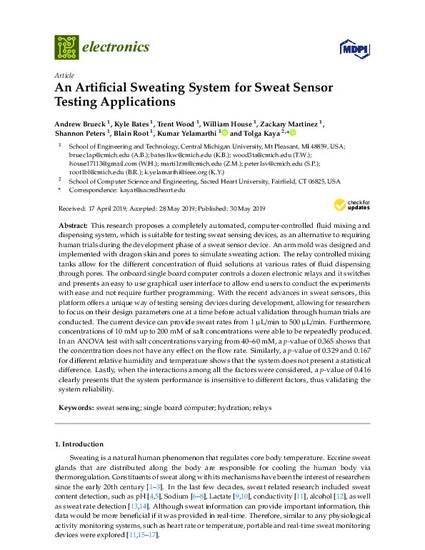
This research proposes a completely automated, computer-controlled fluid mixing and dispensing system, which is suitable for testing sweat sensing devices, as an alternative to requiring human trials during the development phase of a sweat sensor device. An arm mold was designed and implemented with dragon skin and pores to simulate sweating action. The relay controlled mixing tanks allow for the different concentration of fluid solutions at various rates of fluid dispensing through pores. The onboard single board computer controls a dozen electronic relays and it switches and presents an easy to use graphical user interface to allow end users to conduct the experiments with ease and not require further programming. With the recent advances in sweat sensors, this platform offers a unique way of testing sensing devices during development, allowing for researchers to focus on their design parameters one at a time before actual validation through human trials are conducted. The current device can provide sweat rates from 1 µL/min to 500 µL/min. Furthermore, concentrations of 10 mM up to 200 mM of salt concentrations were able to be repeatedly produced. In an ANOVA test with salt concentrations varying from 40–60 mM, a p-value of 0.365 shows that the concentration does not have any effect on the flow rate. Similarly, a p-value of 0.329 and 0.167 for different relative humidity and temperature shows that the system does not present a statistical difference. Lastly, when the interactions among all the factors were considered, a p-value of 0.416 clearly presents that the system performance is insensitive to different factors, thus validating the system reliability.
Brueck, A., Bates, K., Wood, T., House, W., Martinez, Z., Peters, S., Root, B., Yelamarthi, K., & Kaya, T. (2019). An artificial sweating system for sweat sensor testing applications. Electronics, 8(6), 606. Doi: 10.3390/electronics8060606

This article is an open access article distributed under the terms and conditions of the Creative Commons Attribution (CC BY) license